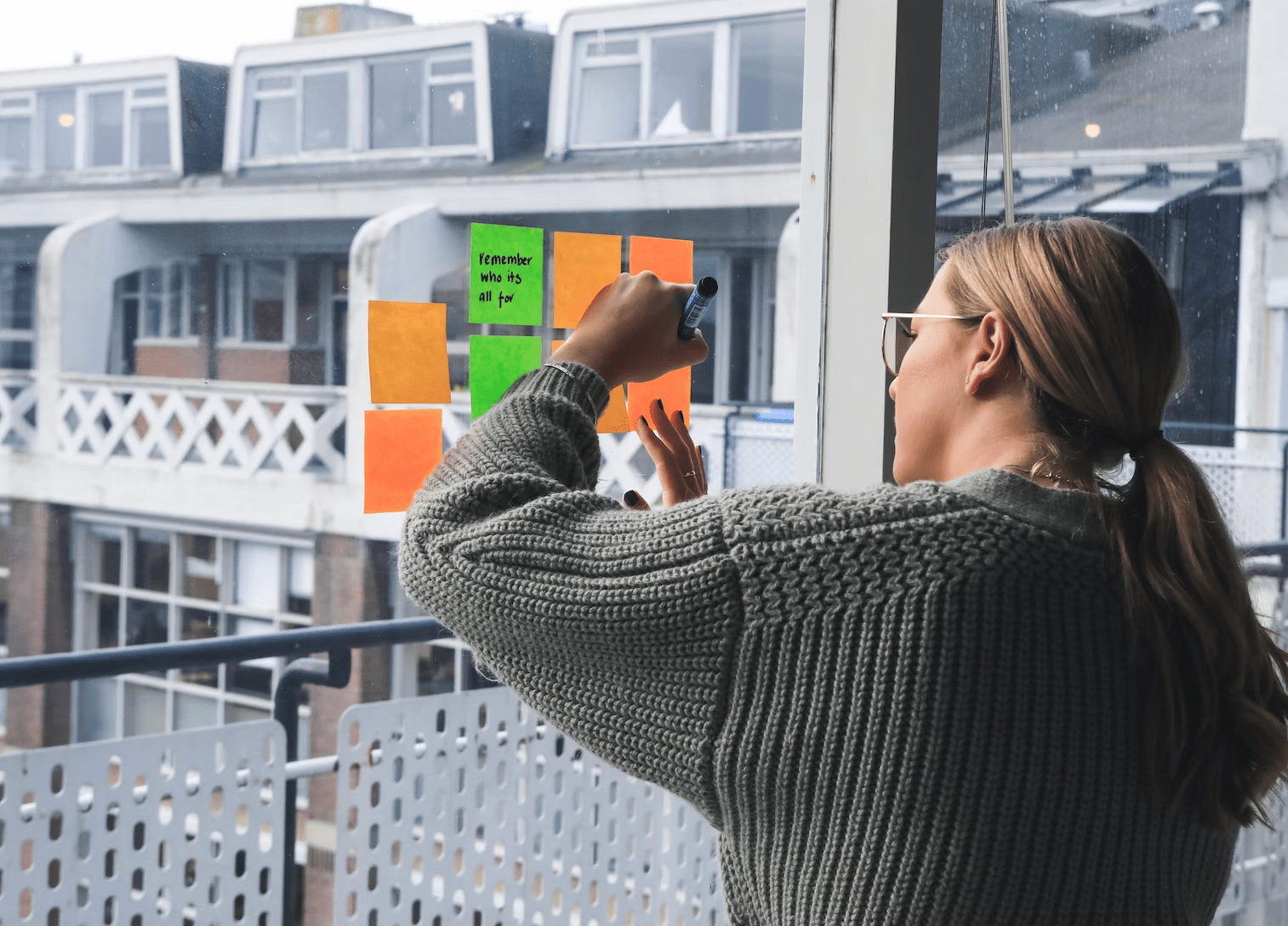Ideation Round Two
We now approach one of the most crucial moments in entrepreneurship – the moment after you’ve run your first tests.
This moment is so meaningful because there are three main directions you can take, and there are so many stories in which each of these three was a brilliant move.
What was true for someone else might not be true for you, so we’re going to tread carefully while we consider our options.
They are:
Option 1 – Scrunch all your work up into a ball and dramatically throw it in the bin
Option 2 – Get excited and start making plans for the next phase of your business
Option 3 – Make some changes to part of your concept and stay consistent with the rest
As you can see, each of these is potentially a good move, and potentially a costly trap.
It depends on how much our views have changed, and what response we’re getting back from the market.
Let’s look at some of the most common scenarios…
“We’re No Longer Feeling It”
You might be expecting encouragement and quotes on perseverance, but if you’ve lost your passion or interest, a deliberate pause can be a great move.
Pausing and quitting are different.
Quitting is more permanent, walking away from the game altogether, and that’s rarely a move that serves you well.
A deliberate pause halts all experiments and progress, but lets you keep the broader plan and story of someone who is exploring new business opportunities.
It means you can re-start your work in a few months without feeling like a hypocrite.
Entrepreneurship takes a lot of creative energy and enthusiasm, and if you’re running out of both this early, it might be a sign that this is the wrong avenue or the wrong timing.
Pausing is also good when your headspace is taken up by changes outside of your work, including:
· Turmoil at your day job
· Relationship changes
· Planning a wedding
· Expecting a baby
· Health challenges
In each of these scenarios, you’re not going to have a lot of spare mental capacity to run more tests, fill in canvases, sketch out new ideas or interview customers.
Your job for this season might be to look after yourself and your family.
The business can wait, and you might be better off pausing your progress rather than feeling guilty and anxious about your lack of progress.
Your emotional energy is needed elsewhere, and we don’t want to mix your current feelings with your feelings about this new startup.
“The Market Doesn’t Care”
This is where encouragement and perseverance come in – when you’re still keen to build but haven’t found a good market.
We can’t expect the market to love our first ideas or initial questions, we are not entitled to an instant fandom.
It might be that our ideas aren’t strong enough, or we’re talking to the wrong people, or that we need to frame ourselves differently.
A helpful question is “Is the feedback suggesting that I alter my vision, or merely improve upon the execution?”.
Both are fixable problems, but they require different approaches.
It might be helpful to analyse other customer segments, or think creatively about what else we could offer these customers in the future.
This is called a “Pivot” – keeping some parts where they are, then changing others.
You’re still in the same spot, but now facing a slightly different direction.
“The Market Likes Some Of Our Ideas”
It’s easy to take this as a negative, but it’s a huge compliment to the work you’ve put in so far.
It shows that you’re on the right track, your radar is working, and that there is potential that’s worth further exploration.
Is the feedback suggesting that customers sort-of like all of your ideas, or that they really like some ideas and not others?
This is a great time to look at different customers, design new menu items and create more prototypes.
If the response has been lukewarm, it might be a sign that you should try something weirder, more polarising or more specialised, to see if that resonates with specific parts of the market.
This is called an “Iteration”, and you’ll want to test a few of them.
“The Market Has Said ‘Shut Up And Take My Money’”
A really exciting time, this is your chance to make the most of your momentum and offer some sort of pre-sale.
Asking for a purchase is a win-win, because it either earns you some revenue or forces customers to reveal any hidden objections that are holding you back.
By all means, start serving customers and bringing in cash, but also keep an eye out for new product and service opportunities, new markets and new ways of framing your value.
Pivots and Iterations
The second round of ideation is when we start to look iterations (small changes that spark new versions of your ideas) and pivots (large changes that might put you in a new industry or new category).
None of this has anything to do with your personality or your self-worth, this is your chance to be a designer and come up with a range of options for further exploration.
While pivots might seem more drastic than iterations, they both stem from the same realisation – there is something with exciting potential here, we haven’t got it yet, but if we think creatively we might find a remarkable idea”.
Here are some helpful questions to work through as you decide which elements to keep and which elements to change:
Were people being polite or enthusiastic?
The difference is whether they’d take a next step, be it another conversation, pre-order, make an introduction or sign up to a list with their email address.
Is our idea truly better/cheaper than what is on the market today?
Better can mean a lot of things, but we want to know that customers see at least part of our work as being better than what already exists.
Are the people we’ve spoken to truly our customers?
Are they in the market for a solution to a problem, or are they just browsing? This affects how much weight we give to their opinions and feedback.
Is there a deeper problem?
Perhaps there’s another root cause on our Problem Tree that is more important to address?
Or maybe our customers are focused on a bigger issue, one that can’t be resolved by what we’re selling?
Who else might see huge value in this?
There are always other customers who might love part or all of what you’re working on, even if they look completely different to your current audience.
Who else has a problem or incentive that you might be able to serve?
What else could we put on our menu?
Menu design is an easy way of thinking up new ideas, because we don’t need to think through the technical details until we suspect a customer would actually choose this option.
This is your chance to dream up headlines and short descriptions that might catch a customer’s eye, so that they click a link or ask a question.
You might try a menu with 6-10 options, then observe how customers read and interpret their options.
Is there another way of giving people what they want?
It’s helpful to push our ideas to see what other shapes they could take;
e.g. what if it were entirely digital?
What if it was radically cheaper?
What if someone else did all of the manufacturing and delivery?
What if we ran a physical store?
What if we partnered with an existing brand?
What if we held a retreat?
Not all of them will be applicable, but it shows us where we have flexibility and where we need to stay consistent.
The First Pancake Is Always Lumpy
With most things in life, the first time you try something is likely to be the clumsiest.
New versions of your ideas are going to benefit from the same tools we’ve already explored, but this time you know how they work.
That frees you up to concentrate on the ideas themselves, not how to fill in a template.
Your second Problem Tree is easier to populate, your second customer interviews feel more natural, your second articulation of your cause is more honest and specific.
The other advantage you have is context – you’re much more knowledgeable on your industry, customers, competitors, which limitations are real and which limitations might be myths in the modern era.
That helps you think more creatively about solutions, take inspiration from those who have gone before you, and mentally put yourself into your customers’ shoes.
Find A Good Sounding Board
If you’re unsure or discouraged, it might help to find a sounding board or advisor to talk through your thought process.
This is sometimes called “Rubberducking”; if you explain your predicament to a rubber duck (who listens without judgement), you often find a resolution just by hearing your own train of thought.
Rubber ducks aren’t magical, they just nudge you to articulate your position and your dilemmas in plain language, and that’s usually enough to spot the true issue.
Alternatively, it might be time to bring in a business coach, who can help with technical barriers and provide a well-qualified opinion.
They can’t build the business for you, but they might help you see new possibilities or make observations about what you really care about.
Time to ideate – draft new ideas, talk to new people, and really listen to what they’re trying to tell you.
Your aim is to leave the process with a handful of the strongest or most interesting opportunities.
They don’t have to be fully formed, they just need to have potential and some customer interest.
We will then take these ideas through another round of testing and validation, with more prototypes, pretotypes or experiments with real customers.
Best of all, this part of the design journey is a lot of fun – playing with ideas while the stakes are low and the payoff is high.



